
© Paul Kolnik. (Click image for larger version)
Alvin Ailey American Dance Theater
Chroma, D-Man in the Waters (Part I), LIFT
New York, City Center
20 December 2013
www.alvinailey.org
www.nycitycenter.org
Ailey, Recharged
Since stepping into Judith Jamison’s shoes just two-and-a-half years ago, Robert Battle has set in motion a quiet revolution at Alvin Ailey American Dance Theater. Like his frequent curtain speeches, Battle’s leadership seems to combine a lack of flash with a determination to honor and extend the virtues of his dancers. He may appear low-key, but don’t be fooled. As he said, with a self-deprecating chortle, before a recent performance, Ailey fans should tighten their seatbelts.
Battle seems intent on demonstrating that Ailey dancers can dance anything, no matter what the style or mode of composition (contemporary ballet, modern dance, post-modern dance, hip-hop). But what is in a way even more striking is how the repertory he chooses – often, it must be said, by trendy choreographers – is transformed by the Ailey dancers, with their combination of individuality and collaborative spirit. Despite registering strongly as individual personalities, they are equally involved with each other onstage; like the members of a family, each dancer has his role to play. And one can feel the dancers’ hunger for new challenges – I have yet to see a less than full-throttle performance, even when a choreographer’s style does not quite fit the company’s technique, as with Paul Taylor’s Arden Court last year. Often, they reveal aspects or colors I’d never noticed before. I’m always surprised by how, in the finale of Ohad Naharin’s Minus 16 – a portrait of postmodern Israeli alienation – the Ailey dancers manage to show concern for the audience members they lure onto the stage. Instead of feeling terrified and embarrassed, their “victims” sense that they will be looked after; because of this, they are able to really let themselves go.
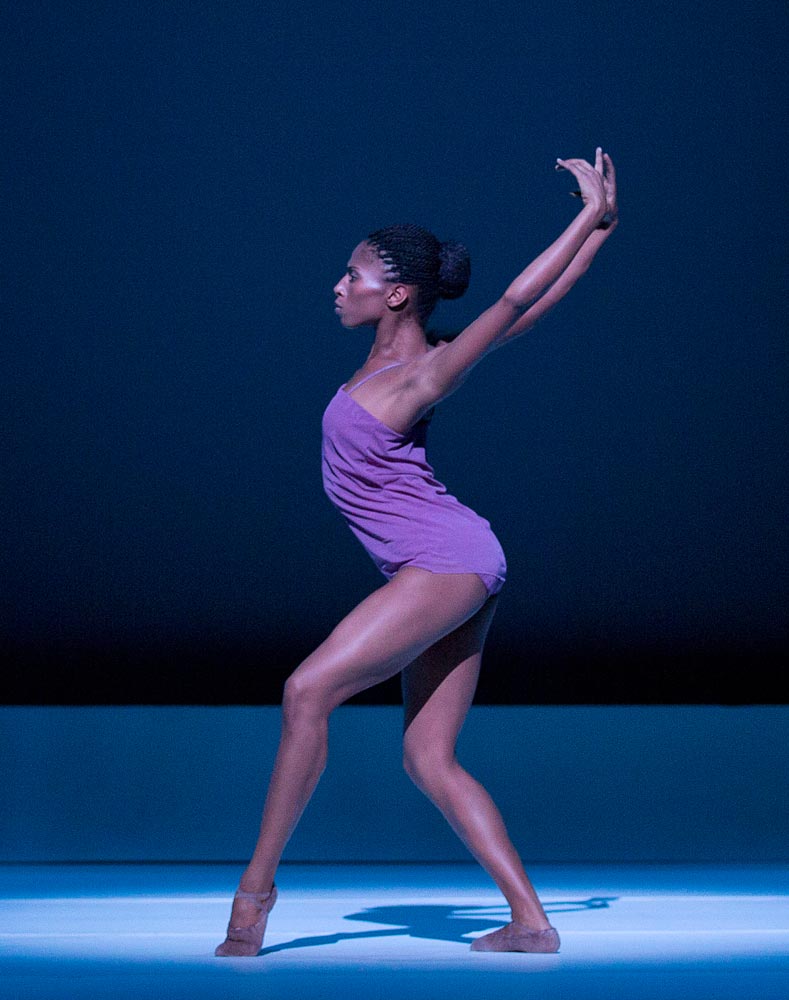
© Paul Kolnik. (Click image for larger version)
The new works this season – Chroma, D-Man in the Waters (Part I), and Lift – are a typically eclectic mix. Chroma, by the British choreographer Wayne McGregor, whose whiplash-inducing style and penchant for cool lighting displays have propelled him to the forefront of contemporary ballet, seems geared to show that the Ailey company can be as contemporary and dazzling as anyone today. Ailey is also the first non-ballet company in the US to take on Chroma, originally made for the Royal Ballet (in 2006). (It is performed off-pointe.) Whatever the values of the ballet – and I’ll admit its de-humanized, often sexual contortions, blaring score, all-white set, and fierce presentationalism leave me quite cold – Battle has proved his point. These dancers can twist and split their legs and slide and grapple with the best. And they look good doing it. In a slow, stretchy pas de deux, the gorgeous, long-limbed Alicia Graf Mack, especially, transforms herself into something not quite human, capable of bending and twisting to almost frightening extremes. (McGregor has a way of turning dancers into a catalog of body parts.) At times, her long, curled-over leg is reminiscent of a scorpion’s tail.

© Paul Kolnik. (Click image for larger version)
But not even these dancers can imbue Chroma with rhythmic variety or subtle accents – there is nothing subtle about McGregor’s arm-yanking couples or the way the men constantly pry the women’s thighs apart – but they do manage to color the movement with theatrical undertones and style. The work comes across as less violent, more attitude-driven, like a music video.

© Paul Kolnik. (Click image for larger version)
D-Man in the Waters (Part I) is perhaps the best-known work by the American modern dancer and choreographer, Bill T. Jones, (it was revived by his own company just this year). Created in 1989 at the height of the Aids crisis, D-Man is a cry of defiance against the disease. It is less notable for its actual dance vocabulary than for its energy and joy. (Similarly the Mendelssohn Octet to which it is set is built upon the insistent repetition of a single motif.) It is a dance of life, clearly meant to evoke a community of people fighting for survival, with exuberance and love. Lines of camouflage-wearing dancers form and dissolve, bodies dive and fall, dancers “swim” vehemently against the tide. At Ailey, the balletic notes of the work stand out: feet are pointed, pirouettes are rigorously vertical, feet skitter in petit allegro. The clarity allows certain details to pop, as when one of the dancers (Michael Francis McBride) returns to the stage to pick an invisible flower and hold it delicately in his hand. The Ailey dancers capture the work’s warmth and underlying innocence, toning down their big personalities to allow the piece to speak for itself. In a quartet for a man and three women in which each teeters toward the floor, Jammer Roberts – who is having a fantastic season – stands out for his gentle concern, so remarkable in a man with his Atlas-like physique (he is six foot five).
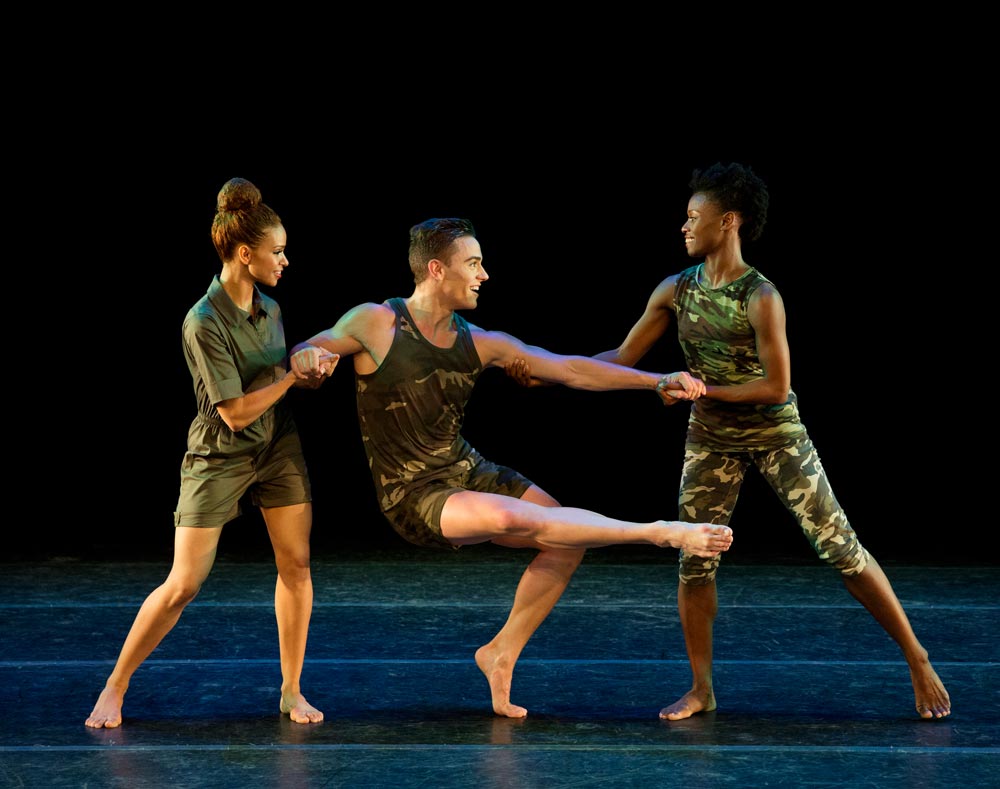
© Paul Kolnik. (Click image for larger version)
That physique is put in dramatic relief in the third première, the only completely new work this season, Aszure Barton’s Lift. This is Barton’s first collaboration with the company; the Canadian choreographer has her own modern dance ensemble, and has also worked with Netherlands Dance Theatre, Mikhail Baryshnikov, and American Ballet Theatre (among many others). Even so, as often happens when a choreographer is exposed to this company, she has – consciously or unconsciously – created an “Ailey” piece: high-energy, with a strong rhythmic impulse and a not-so-subtle African flavor. (The bouncing steps, the wing-like arms, the grass-like frayed skirts.) That said, it’s the only work on the program that allows us see the dancers in a new light, revealing aspects of their technique and physical qualities untapped elsewhere. Barton seems particularly fascinated by Jammer Roberts’s back, a knotty landscape of muscle and concentrated energy. As he rolls, twitches, and billows his torso beneath a bright light, facing away from the audience, his arms fluttering and beating like the wings of a pterodactyl, his body becomes a rocky landscape. He crouches, on his tiptoes, and slowly expands, becoming twice his original size, seeming to fill the whole stage.
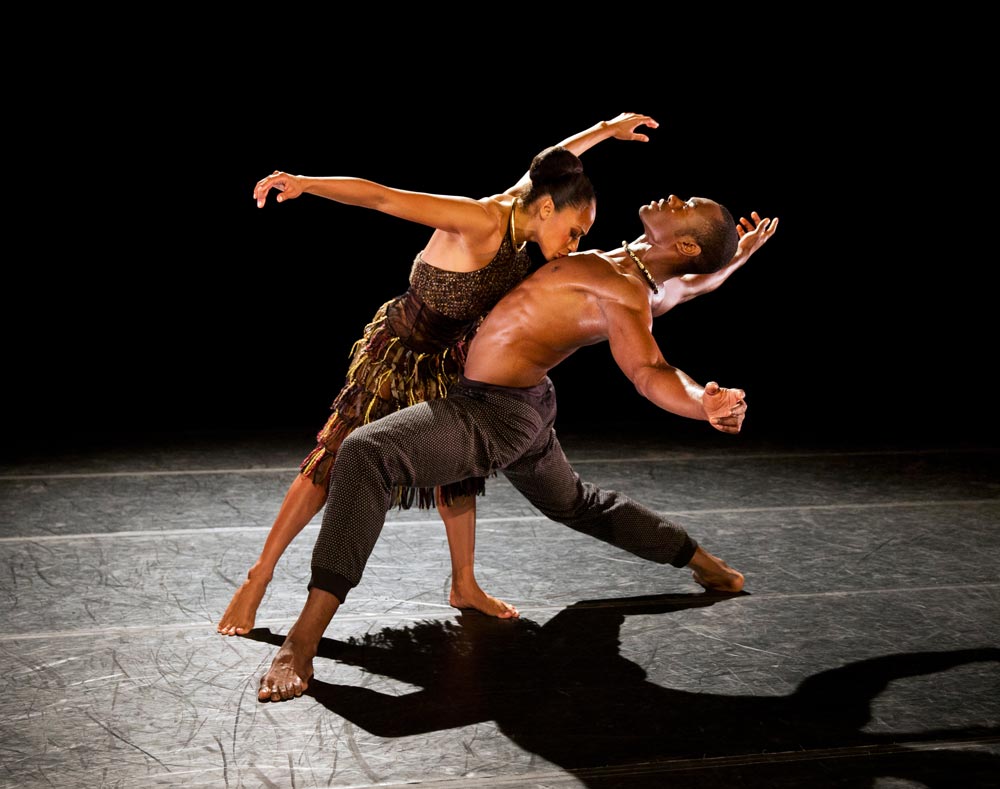
© Paul Kolnik. (Click image for larger version)
There is a striking pas de deux in which Barton has the slender, elegant Linda Celeste Sims partner Roberts by nestling her face against his chest, a concave shell. They cross the stage, pressed in this intimate, but tenuous embrace; despite his size and power, Roberts seems the more vulnerable. Sims’ body is free, un-fettered – what a relief after the manipulations of Chroma! – and it is she who draws Roberts forward, exploring the crevices between their bodies with her leg and foot. More compelling yet is Barton’s exploration of rhythm, rhythmic subdivision, and counterpoint, well suited to the dancers’ remarkable rhythmic acuity. The score, by Curtis Macdonald, is mostly percussion combined with ambient sound (water, air). The dancers internalize the rhythms and elaborate on them, creating a lively call and response with their feet, hands (waving or slapping thighs), shoulders, heads, legs. They become visual expressions of the rhythm. When they gather in a tight clump, bouncing in tight synchronicity, they beat together like a single organism.
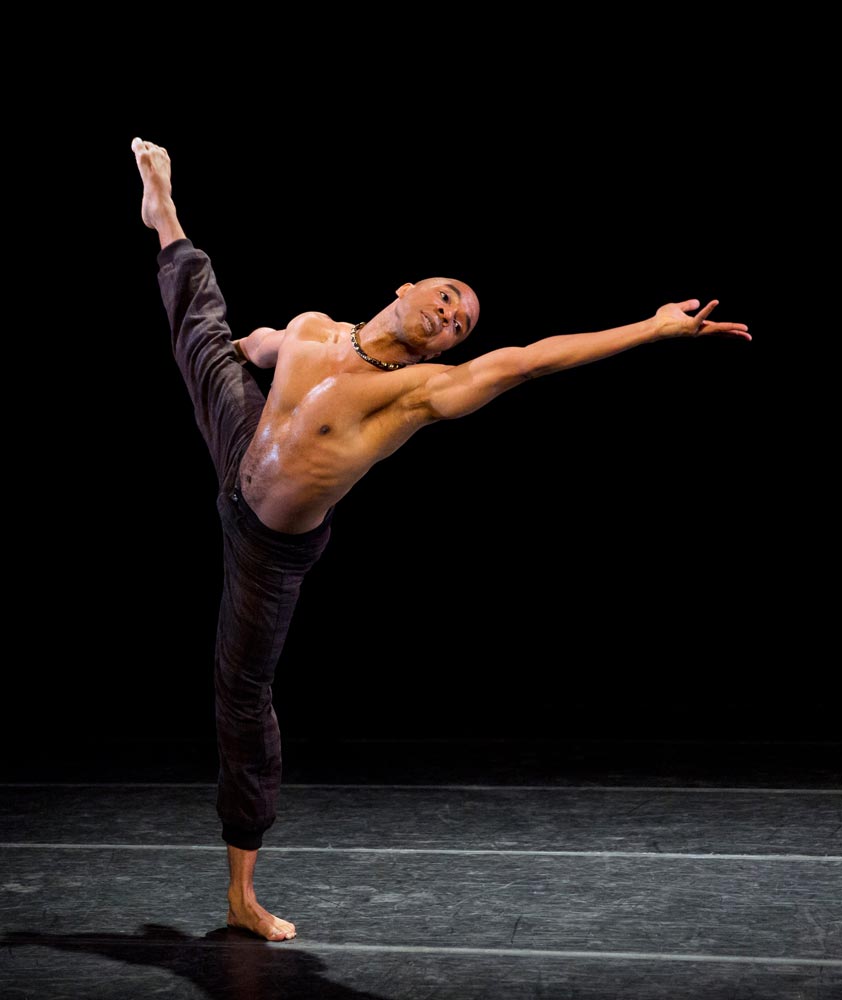
© Paul Kolnik. (Click image for larger version)
Even if Lift relies a bit too heavily on special effects – hazy lighting, demonic laughter, etc – and, toward the end, indulges in a passage of Avatar-like faux ritualism, it’s a visually exciting, stylish piece. But, as with Chroma, it’s really the Ailey dancers who make it so.













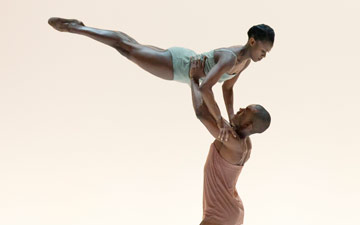
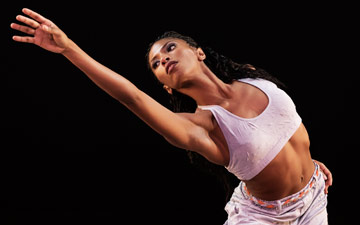
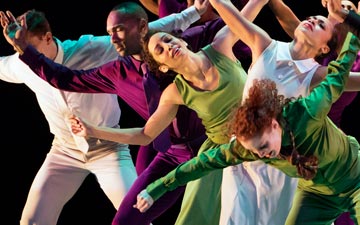

[…] Wayne McGregor). The company, under the still-new leadership of Robert Battle, is looking great. Here‘s my […]
Thank you for this review!
Only 9 days are left to support a documentary about Ohad Naharin and the Batsheva Dance Company. The film also cover Naharin’s early career in New York and connection with Alvin Ailey.
Please take part if you love Naharin’s art!
http://www.kickstarter.com/projects/heymannbrothers/mr-gaga-a-documentary-film-about-ohad-naharin